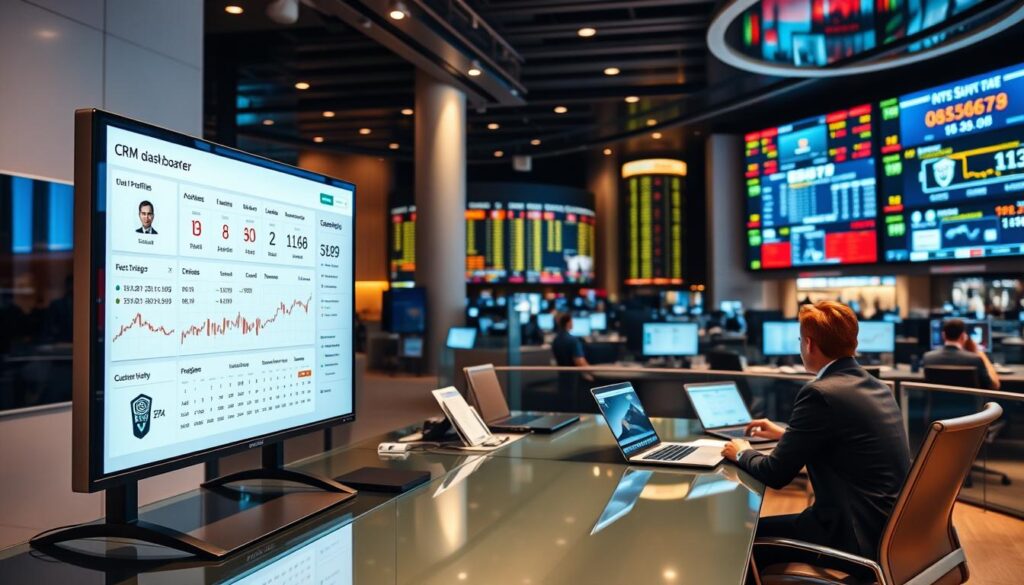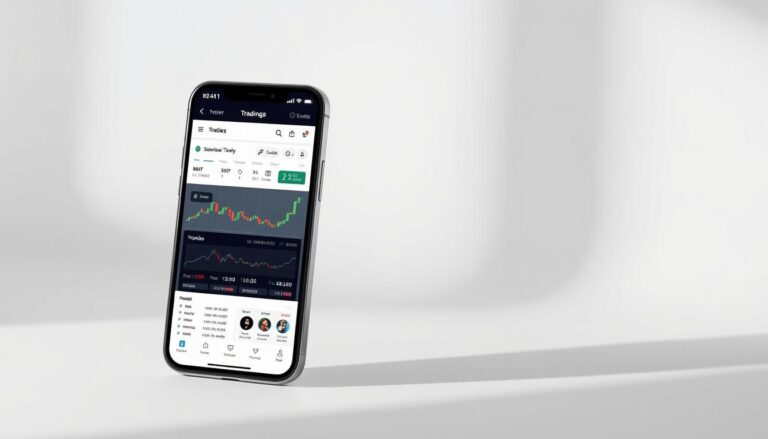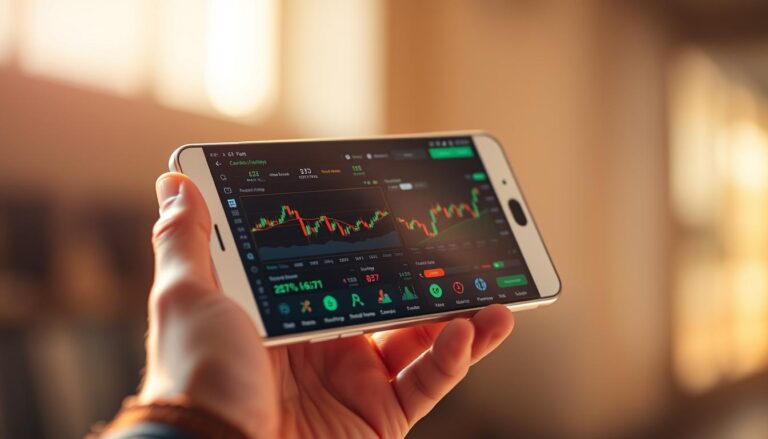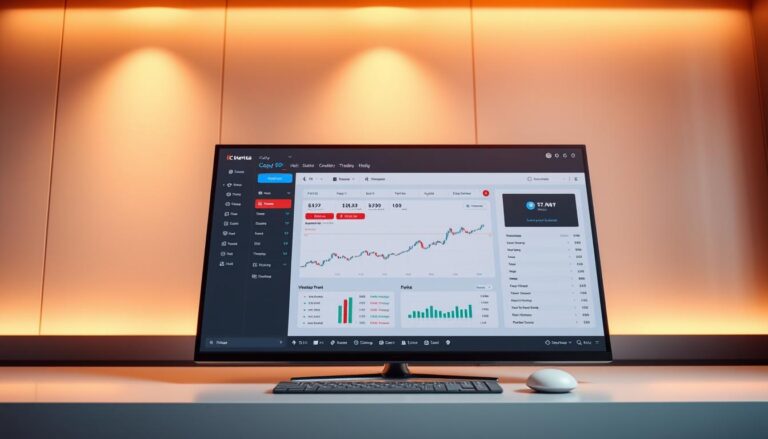Understanding the Matchtrader Platform for Trading
Modern trading demands tools that adapt to fast-paced markets. The omnichannel trading system bridges this gap, offering flexibility across devices while maintaining precision. Built by Fintech specialists, it combines cutting-edge technology with intuitive design, catering to both brokers and traders.
Seamless synchronization ensures settings and strategies stay consistent whether accessed via desktop, mobile, or web. This eliminates friction for users switching between devices, letting them focus on opportunities instead of technical adjustments. The system’s architecture prioritizes speed and reliability, critical for Forex and proprietary trading environments.
Brokers benefit from streamlined operations, reducing overhead while delivering robust services. Traders gain a unified experience, with tools tailored to analyze trends and execute decisions efficiently. Its modern interface balances simplicity with advanced features, appealing to newcomers and seasoned professionals alike.
At its core, this solution reflects years of industry expertise. By integrating in-house innovations, it addresses evolving demands without compromising stability. Whether managing portfolios or exploring markets, users gain a competitive edge through technology designed to evolve with their needs.
Overview of the Matchtrader Platform
In 2015, financial technology shifted focus toward flexible systems that could serve brokers and traders simultaneously. Early versions prioritized basic transactional functions, but market demands soon pushed developers to rethink scalability. The rise of mobile trading and regulatory changes became catalysts for innovation.
From Custom Tools to Industry Standards
Initial releases addressed niche broker needs but lacked cross-device compatibility. By 2018, system architects integrated API-driven frameworks, allowing third-party tools to connect seamlessly. This upgrade reduced manual processes for brokers while giving traders real-time strategy adjustments.
Features That Redefined Efficiency
Key advancements emerged through client feedback and emerging trends:
- Unified dashboards merging analysis with execution
- Cloud-based synchronization across devices
- Customizable risk management protocols
The transition to white-label solutions in 2020 allowed firms to maintain brand identity while using proven infrastructure. This approach balanced technical reliability with commercial adaptability, setting new benchmarks for trading ecosystems.
Cutting-Edge Technology Behind the Platform
Empowering traders requires more than basic tools – it demands adaptable frameworks that keep pace with market shifts. At the core of this approach lies Progressive Web App (PWA) technology, which merges web flexibility with native app performance. Users access real-time data instantly, even with unstable connectivity, while updates occur seamlessly in the background.
Innovative PWA Technology and Interface
The PWA-driven interface eliminates app store dependencies, letting clients launch tools directly from browsers. Multi-device access ensures trades sync instantly between smartphones, tablets, and desktops. Traders monitor forex movements or adjust strategies without losing progress – critical for volatile markets.
Seamless API Integrations with CRMs and Apps
Flexible API architecture connects third-party tools like Forex CRM and Prop CRM into a unified workflow. Brokers automate client onboarding, risk assessments, and compliance checks through this plug & play ecosystem. Key integrations include:
- Instant data sharing between trading apps and CRM dashboards
- Automated trade execution triggers based on client activity
- Real-time reporting for regulatory compliance
Partnerships with industry leaders have refined these connections, reducing manual errors by 63% in recent case studies. This technology doesn’t just streamline operations – it reshapes how firms engage with fast-moving markets.
Customizable Charts and TradingView Integration
Visual clarity drives success in volatile markets. Advanced charting tools let traders tailor layouts to their strategies, adjusting colors, timeframes, and indicators with a few clicks. This flexibility helps users spot trends faster, whether analyzing forex pairs or commodities.
The integration of TradingView’s renowned tools elevates precision. Known for crystal-clear visuals, these charts display real-time data without lag. Traders draw trendlines or Fibonacci retracements that mirror live price action, ensuring decisions align with market movements.
Key advantages include:
- Drag-and-drop customization for technical analysis
- Instant updates across 50+ asset classes
- Multi-chart layouts for comparing instruments
Markups appear exactly as seen in market watch, eliminating guesswork. This accuracy is vital when assessing liquidity shifts or entry points. Users test strategies using historical data, refining approaches without risking capital.
These features transform complex data into actionable insights. Clean interfaces reduce distractions, letting traders focus on signals rather than clutter. Whether scalping or swing trading, adaptable charts become extensions of a trader’s analytical process.
Automated Trading Strategies for Enhanced Decision Making

Speed and precision define modern trading success. Automated systems now handle repetitive tasks, letting traders focus on strategy refinement. These tools analyze market patterns faster than manual methods, reducing emotional bias and execution delays.
Algorithm-Based Trading Tools
Advanced algorithms process vast datasets in milliseconds, identifying opportunities humans might miss. Built with input from financial experts, these systems adapt to volatility by adjusting stop-loss orders or scaling positions dynamically. Risk parameters update in real time, aligning with predefined thresholds.
The solution integrates automated deposits, streamlining fund allocation during high-frequency trades. Manual workload drops by 40-60% in backtested scenarios, according to industry studies. Traders combine rule-based executions with discretionary analysis, balancing automation with human oversight.
Key benefits include:
- 24/7 trade monitoring without physical presence
- Instant response to price shifts using historical data patterns
- Customizable alerts for specific market conditions
Payment processing becomes seamless through integrated gateways, ensuring swift transaction settlements. By merging algorithmic precision with traditional methods, traders achieve consistency in unpredictable markets. This hybrid approach amplifies decision-making accuracy while preserving flexibility.
Bridging Liquidity and Integration with Top Providers
Access to reliable liquidity defines success in global markets. The system links users to regulated CFD providers and institutional-grade liquidity pools, ensuring tight spreads and rapid order execution. This connectivity transforms fragmented markets into cohesive opportunities.
Partnerships with Regulated Liquidity and CFD Providers
Collaborations with firms like PrimeXM and OneZero enable instant access to 40+ liquidity sources. These integrations occur through standardized APIs, reducing setup time while maintaining compliance. Brokers gain real-time exposure management, balancing risk across asset classes.
Key advantages of these alliances include:
- Deep liquidity for forex, indices, and commodities
- Automated reconciliation of trades with FXCubic systems
- Transparent pricing models audited by third parties
Regulated partners enforce strict security protocols, shielding users from counterparty risks. The tools provided allow teams to monitor positions across apps and dashboards simultaneously. Traders benefit from consistent fills even during volatility spikes.
Technologically, these bridges eliminate latency through cloud-based routing. Operational costs drop as manual interventions become obsolete. By prioritizing trusted networks, the ecosystem ensures stability without compromising speed.
Enhancing Client Office and CRM Capabilities
Effective client management separates thriving firms from competitors. Integrated Client Office tools streamline workflows, merging account oversight with actionable insights. This unified approach eliminates data silos, letting teams focus on strategic decisions rather than administrative tasks.
Forex and Prop CRM Functionalities
The system adapts to distinct needs of Forex and proprietary traders. Forex clients manage multiple currency pairs with real-time balance updates and margin alerts. Proprietary traders track performance metrics, funding allocations, and risk exposure through customizable dashboards.
Key features include:
- Automated client onboarding with KYC verification
- Centralized communication logs for dispute resolution
- Custom reporting templates for compliance audits
Real-time synchronization ensures account details stay current across devices. Teams share documents securely within the interface, reducing email clutter. Activity histories provide transparency, building trust through visible trading records.
This experience simplifies complex processes without sacrificing depth. Brokers handle high volumes efficiently, while clients enjoy self-service options for deposits or withdrawals. Unified data flows cut operational delays by 35% in recent implementations, proving its role as a growth accelerator.
Secure and Efficient Payment Gateway Solutions
Trust fuels every transaction in global markets. Integrated payment gateway solutions ensure deposits reach trading accounts securely, even during volatile conditions. Advanced encryption shields sensitive data, while automated systems verify transfers in milliseconds.
Bespoke payment processor technology simplifies cross-border deposits. Users access 20+ currencies and regional payment methods through a single interface. Funds reflect instantly, letting traders capitalize on opportunities without delays. Automated booking reduces manual errors, cutting deposit processing time by 70% in recent trials.
Seamless transactions help maintain open positions during margin calls. Systems prioritize critical payments, ensuring liquidity buffers stay intact. Key benefits include:
- 24/7 transaction monitoring with fraud detection
- Real-time balance updates across multiple accounts
- Unified dashboards for tracking deposits and withdrawals
These solutions slash operational costs by streamlining reconciliation. Clients enjoy smoother experiences, fostering long-term loyalty. By merging security with speed, firms build trust while accelerating trading workflows.
White Label Trading Solutions for Brokers
Building a distinct brand identity helps brokers stand out in competitive markets. White label solutions let firms rebrand trading tools under their own name, creating a cohesive experience for users. This approach eliminates the need for costly in-house development while maintaining full control over client interactions.
Brand Customization and App Store Integration
Brokers can tailor every visual element, from logos to color schemes, ensuring alignment with their corporate identity. App store integration allows direct distribution of branded apps through iOS and Android platforms. This seamless process bypasses technical hurdles, letting businesses focus on client acquisition.
Key advantages include:
- Customizable dashboards reflecting brand messaging
- Direct downloads via broker websites or app stores
- Automatic updates to maintain compliance
These solutions improve retention by fostering familiarity. Clients interact with a unified interface they recognize, boosting trust. Expanded market reach comes from appearing credible in app stores alongside established financial apps.
Transitioning brokers receive dedicated support, including technical guidance and marketing resources. This ensures smooth adoption while minimizing downtime. By leveraging white label tools, firms scale efficiently without sacrificing their unique voice.
Tailored Solutions for Forex and Prop Trading Markets
Financial institutions require specialized approaches to stay competitive. Custom tools address unique challenges in forex and proprietary trading, balancing speed with regulatory demands. These solutions streamline onboarding while safeguarding against volatile market shifts.
Client Onboarding and Risk Management Tools
Automated KYC checks verify identities within minutes, reducing manual reviews by 58%. Integrated document scanners validate passports or utility bills, flagging discrepancies instantly. Risk thresholds adjust dynamically based on trading history and asset preferences.
Key features include:
- Customizable risk profiles for different client segments
- Real-time margin monitoring across multiple accounts
- Automated contract generation with e-signature support
Brokers enforce compliance through pre-set rules aligned with industry regulations. Alerts trigger when positions approach exposure limits, allowing swift interventions. Unified dashboards display client activity, simplifying audits.
These services cut onboarding time from days to hours. Proprietary firms benefit from tailored liquidity buffers, minimizing capital risks during high-frequency trades. By merging efficiency with security, businesses scale sustainably in regulated environments.
Comprehensive Benefits for Brokers and Traders
Financial partnerships thrive when both brokers and traders gain clear advantages. Streamlined workflows and intelligent resource allocation create environments where businesses grow sustainably. The system’s integration of tools reduces manual tasks, freeing teams to focus on strategic priorities.
Cost Optimization and Operational Efficiency
Automated processes cut operational expenses by up to 45% in brokerage firms. Back-office tasks like client onboarding and trade reconciliation become frictionless. Key financial benefits include:
- Reduced staffing needs through AI-driven reporting
- Lower infrastructure costs via cloud-based solutions
- Dynamic resource allocation during market volatility
Expert Support and Transparent Dealings
Dedicated support teams guide users through technical setups and compliance requirements. A single-point contact system simplifies issue resolution, while transparent fee structures build trust. Real-time information sharing minimizes errors in trade executions and client communications.
Brokers access 24/7 assistance for critical updates, ensuring uninterrupted trading operations. This proactive approach strengthens client relationships and reduces operational risks. Clear audit trails and automated documentation further enhance accountability across all transactions.
Integrated Ecosystem for Trading Management
A cohesive digital framework reshapes how financial professionals interact with global markets. By unifying client office CRM tools, payment gateways, and liquidity analytics, this ecosystem eliminates fragmented workflows. Real-time data flows between modules, turning raw inputs into actionable insights.
Seamless API connections ensure every decision reflects up-to-the-minute market conditions. Traders view risk exposure alongside client activity, spotting correlations instantly. Brokers monitor compliance and fund movements through a single dashboard, reducing operational blind spots.
Disparate systems merge into one intuitive interface, tailored for forex prop trading demands. Margin calls trigger automated alerts, while liquidity buffers adjust based on real-time volatility. This synchronization cuts reporting delays by 78%, according to recent industry benchmarks.
Transparency becomes inherent as audit trails track every action across departments. Errors shrink when manual data transfers vanish. The industry benefits from standardized protocols that streamline cross-firm collaborations, fostering trust in fast-paced environments.
Exploring Advanced Features and Trading Tools
Success in fast-moving markets hinges on split-second decisions. Advanced analytics transform raw data into actionable insights, letting traders spot patterns before competitors. These tools empower users to act with confidence, even during rapid price shifts.
Real-Time Analytics and Market Watching
Instant access to market trends eliminates guesswork. Traders track multiple assets simultaneously through customizable dashboards, filtering noise to focus on high-probability setups. Alerts trigger when instruments hit predefined thresholds, enabling swift adjustments.
The introduction of new tournament views adds a competitive edge. Participants monitor rankings in real time, comparing strategies against peers. This feature fosters skill development while attracting clients seeking dynamic engagement.
For proprietary trading firms, integrated risk metrics provide granular oversight. Margin usage and exposure levels update continuously, preventing unexpected shortfalls. Custom reports automate compliance checks, saving hours of manual work.
Adopting a match-trader white label solution amplifies these benefits. Brokers embed branded tools that mirror institutional-grade capabilities, building trust through transparency. Enhanced monitoring features turn volatility into opportunity, aligning execution speed with strategic goals.
Scalable Platform Architecture for Future Growth
Adaptable infrastructure forms the backbone of sustainable trading ecosystems. Built on cloud-based architecture, the system scales effortlessly as user bases expand or market conditions shift. Microservices allow components like white label modules and prop trading tools to operate independently, ensuring updates don’t disrupt live operations.
Future-proofing strategies focus on modular design. Developers integrate backward-compatible APIs, letting brokers adopt new features without rebuilding entire systems. This flexibility supports integration with emerging technologies, from AI analytics to blockchain settlements.
Customization drives client growth. Firms using white label solutions add branded features while maintaining core stability. Tournament views and ranking metrics give traders access to performance benchmarks, fostering competitive analysis. Real-time leaderboards highlight strategy gaps, encouraging skill refinement.
Ongoing development relies on dedicated team support. Engineers monitor infrastructure loads, optimizing server allocations during peak trading hours. Automated testing frameworks preempt bottlenecks, ensuring seamless scaling during volatility spikes. This approach balances innovation with reliability, preparing businesses for tomorrow’s challenges.
Robust Regulatory Reporting and Risk Management
Navigating regulatory landscapes requires precision and adaptability in financial markets. Integrated risk frameworks automatically track exposure across accounts, currencies, and asset classes. This proactive approach helps clients stay compliant while managing volatile positions.
Cloud-Based Risk Intelligence and Compliance
Real-time analytics monitor margin levels, open trades, and liquidity buffers. Cloud tools generate alerts when thresholds approach limits, enabling swift adjustments. These systems sync with global regulations, adapting to regional requirements without manual updates.
Key features simplify compliance for brokers and traders:
- Automated report generation for MiFID II and ESMA standards
- Audit trails documenting every trade modification
- Dynamic risk scoring based on market volatility
Secure bridges with liquidity providers enhance transparency during high-volume trades. Firms verify counterparty credibility while maintaining tight spreads. The match-trader platform ensures all activities align with forex prop trading guidelines through encrypted data flows.
User dashboards display compliance status alongside charts and performance metrics. This unified view lets teams address issues before they escalate. By merging security with efficiency, the system delivers a seamless experience that builds trust in regulated environments.
matchtrader platform: A Complete Omnichannel Trading Experience
Traders expect frictionless access to tools across every device. The omnichannel design delivers this, syncing strategies and analytics between web browsers, mobile apps, and desktop interfaces. Whether analyzing trends on a tablet or executing trades via smartphone, users experience identical functionality without delays.
Integrated Client Office and Seamless Transactions
The client office CRM merges account management with payment processing, creating a unified workflow. Deposits reflect instantly across devices, while automated reconciliations reduce errors. Key integrations include:
- Real-time balance updates synced with trading activity
- Document sharing within CRM dashboards
- Multi-currency support for global prop users
This system bridges liquidity between forex and proprietary markets, ensuring swift order execution. Security protocols encrypt every transaction, building trust through transparency.
Advanced Charting and Customization Options
TradingView charts transform complex data into visual insights. Traders overlay indicators like Fibonacci retracements or moving averages, adapting layouts to their strategies. Customizable timeframes and color schemes let users highlight critical patterns across forex prop instruments.
Three features enhance decision-making:
- Drag-and-drop technical analysis tools
- Multi-chart layouts for comparing assets
- Historical data testing for strategy refinement
The match-trader platform ensures these tools remain accessible whether trading from a café or office. By prioritizing intuitive design, it turns market complexity into actionable clarity.
Emerging Trends and Future Impact on Trading
Global markets are entering a transformative phase driven by AI integration and decentralized tools. Automated systems now predict volatility patterns, letting traders adapt strategies in real time. Regulatory bodies are tightening data security requirements, pushing firms toward compliant solutions like white label ecosystems.
The rise of prop trading demands tools that balance risk with agility. Enhanced TradingView charts in the April release offer multi-asset correlation analysis, helping users spot cross-market opportunities. Client office upgrades streamline KYC processes, cutting onboarding time by 40% in early trials.
Upcoming regulations will prioritize transparency in liquidity bridging. Systems that automate trade reporting and margin monitoring will become industry standards. The April update addresses this with AI-driven compliance modules for forex prop firms.
As demand grows, white label solutions let brokers deploy branded tools faster than ever. Customizable client office dashboards now include real-time risk metrics and social trading features. These changes empower both institutions and independent traders to navigate shifting markets confidently.
The industry’s future hinges on merging advanced analytics with user-centric design. Firms adopting these innovations will lead the next wave of global trading evolution.












